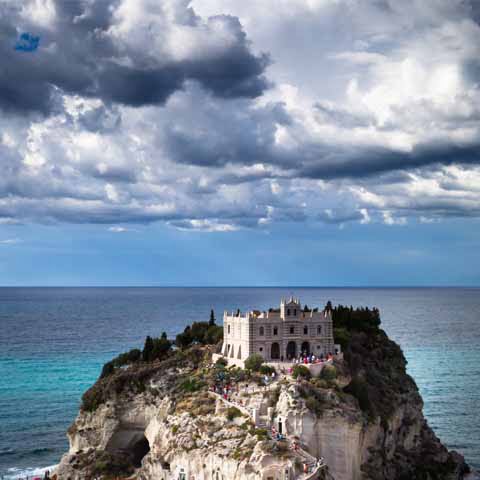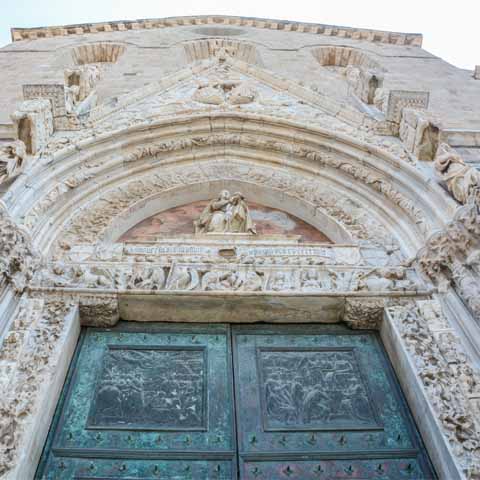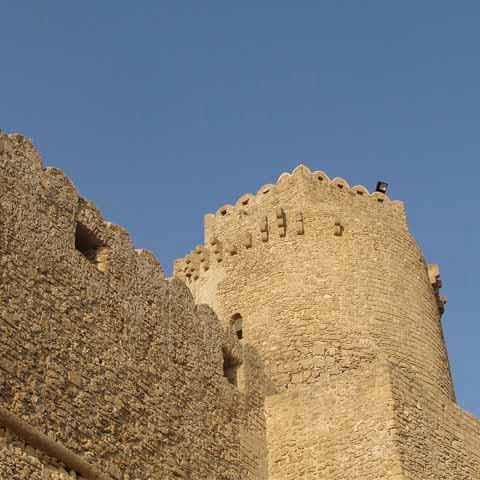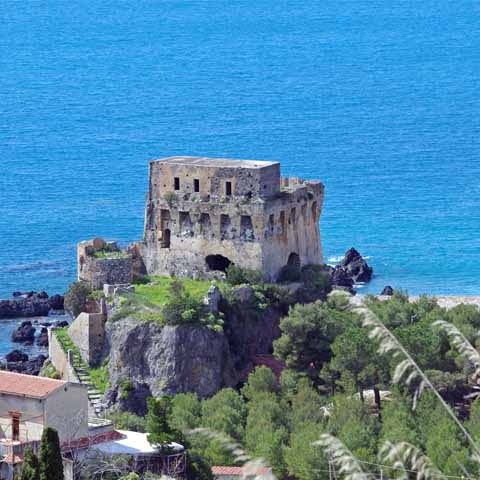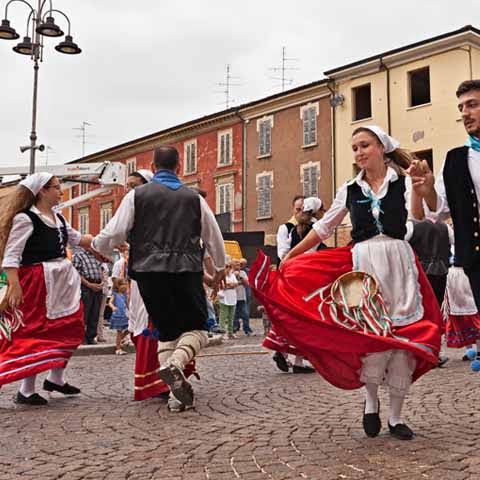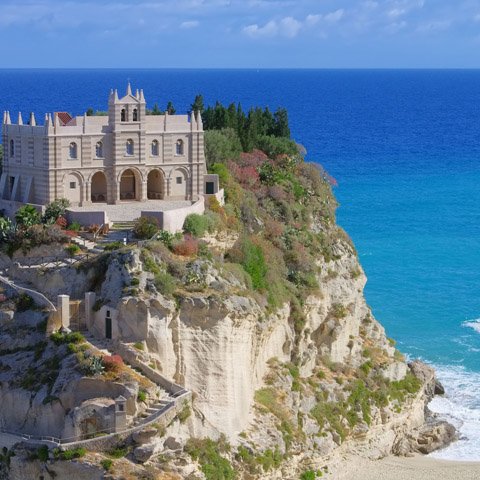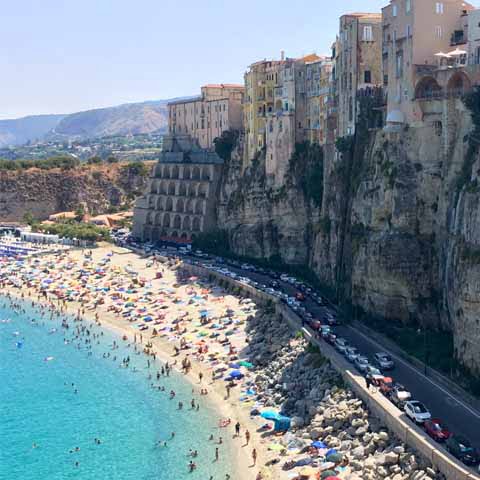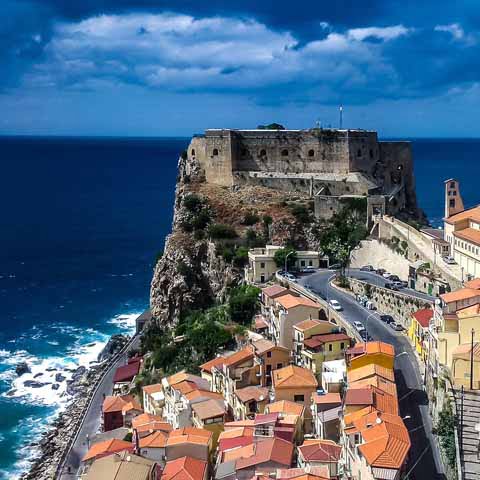Calabria History Travel Guide
The southernmost region on Peninsular Italy, Calabria, is characterized by a rich territory. The center of the region is delineated by the peaks of the Apennines, and the mountains almost reach the coasts.
Due to their steepness, throughout the history of Calabria, the Apennines acted as a natural barrier, making connections between the Tyrrhenian side and the Ionian side difficult, but also between the north and the south of the region. Despite being located between two seas, life in Calabria has always been characterized by the mountains.
Since the earliest times, the populations established themselves on the steep slopes rather than along the coasts, and people here have always been more devoted to agriculture, forestry, and animal husbandry rather than to activities related to the sea.
The natural barrier constituted by the mountainous chain had a major impact on the region’s economy as well.
Calabria has always focused on the exportation of agricultural products, and its population never polarized towards urban centers. This led to the development of rather isolated villages. The situation slightly changed with the development of roads and railways towards the coastal plain.
The unmatched natural beauty of the region led to the flourishing of the tourism sector, but the lack of infrastructure also led to a strong migratory phenomenon of the locals towards the industrial triangle formed by Milan, Genoa, and Turin.
The region has not always been called Calabria. In fact, in the classical period, Calabria indicated the peninsula of Salento, and today’s Calabria was called Bruttium. In the 7th century, during the Byzantine domination, the term Calabria was transferred from Salento to Bruzio, and it initially designated the entire peninsula of Calabria, including the Sinni River.
In the Middle Ages, the region was administratively divided into Calabria Citeriore, or Latin Calabria, and Calabria Ulteriore, or Greek Calabria. These names remained in use until the beginning of the 20th century.
Prehistory of Calabria
The earliest human evidence in Calabria has been found in Casella di Maida in the municipality of Catanzaro. The artifacts, belonging to a Pre-Acheulean industry dated between 700,000 and 500,000 years ago, are among the most significant in Italy.
Another important surface deposit belonging to the final Acheulean age presents key evidence of the Levalloisian technique, including some remains of pebble and splinter tools. These artifacts were found in Rosaneto, near the river Castrocucco. In the proximity of this site, a lithic level showing evidence of the Mousterian industries was identified in the cave of Torre Nave. Some prehistoric paintings of fauna are also present in the cave of Torre Talao.
Among the most important testimonies of the Prehistoric Age is a fragment of a jaw belonging to a Neanderthal humanoid, probably a child, found in Archi, in the area of Reggio Calabria. Other bone fragments belonging to Neanderthals were also found in Nicotera.
The cave of the Sanctuary of the Madonna, in Praia a Mare, also holds evidence of early human civilizations. The lithic levels present in this cave hold evidence of the Upper Paleolithic, the Mesolithic, and different periods of the Upper Neolithic.
Of particular interest is the Romito Cave, where numerous lithic levels belonging to the Gravettian and Epigravettian phases have been identified. Four interesting tombs have also been discovered in the area, two of which belonged to people affected by dwarfism.
The Bronze and Iron Ages are also well represented in the region. Important evidence has been found in many necropolises throughout the region, including the areas of Torre Galli, Francavilla Marittima, and Torre del Mordillo.
History of Calabria
The Mycenaean civilization reached Calabria in the fifteenth century BC, and between the eighth and seventh centuries BC, the Greeks established their first colonies in the areas of Reggio, Crotone, and Sibari. These settlements became part of large proto-urban areas and thrived under the expanding Greek influences until the fifth century BC.
In the fifth century BC, the victory of Sparta over Athens had wide repercussions on the Western Greek world, Calabria included. In fact, it made the territory subject to the pressure of the Italic peoples, and while the Greeks tried to endow their cities with mighty fortifications, beginning from the fourth century BC, the populations of Oenotrians, Sicels and Ausones settled permanently in Calabria, respectively at the north of the Tyrrhenian Coast and at the southern end of the peninsula.
At the beginning of the third century BC, the Romans arrived in the region. Their arrival was followed by a series of confrontations with Carthage, and the Second Punic War changed the political balance of the area. During this time, the region witnessed a decline of the Greeks and the affirmation of Rome.
Presided by the Roman colonies of Crotone and Ipporno and connected to the capital of the Empire by the Capua-Reggio Road, the region was the scene of servile wars. Under the Augustan administration, Calabria was included in the III region of Lucania et Bruttium, becoming a marginal province of continental Italy.
Ultimately, there were few attempts to change the decadence of the region. The crisis of the Western Empire and the barbarian invasions did nothing but accelerate the degradation of the region. This process continued throughout the following centuries, and the region only entered a period of timid recovery in the second half of the sixth century AD thanks to maritime commerce. The establishment of the Byzantine domination left its imprint, especially in the cultural and religious fields, mainly through the work of the Basilian monks.
Partially occupied by the Longobards between the eighth and ninth centuries, the territory was eventually returned to the Byzantines. Along with the Longobards, the Saracens also arrived in the region and established numerous settlements along the coast, including Tropea, Santa Severina, and Amantea.
Successive to the Byzantines, the Normans introduced the feudal system in Calabria in the eleventh century. The reopening of maritime and land commerce and the development of Benedictine monasticism favored a remarkable recovery in the region, a process that continued throughout the following centuries.
In the thirteenth century, with the advent of the Swabians and following the struggles between the Empire and the Papacy, the clerical and laic powers were separated.
Between 1282 and 1302, the War of the Vespers determined the major part of the nobility in the region to merge sides with the Aragonese, presenting themselves at the end of the conflict as a semi-autonomous political force. The nobility gained control over the territory, while the achieved jurisdictional powers ensured them a virtually uncontrolled domination.
In order to weaken these feudal concentrations, the Aragonese monarchy tried to reestablish its rule over the royal domain. To do this, the monarchy began to offer support to the merchant and artisan classes, bestowing baronial ranks to those who were loyal to the crown. Nevertheless, the strategy was not very effective; yet it did achieve some success during the baronial conspiracies, from 1461 to 1485.
The Franco-Spanish conflict took its toll on the region and the differences between the classes reemerged in the first decades of the Spanish dominion. In fact, while keeping their strength almost intact, the barons in the south of the region abandoned their ambitions to fight the monarchy.
In Calabria, the most important consequence of this phenomenon was the accentuation of the baronial sale of administrative titles and tax offices to local agents of poor culture and dubious morality, accustomed to abuse and violence. This led to a general disapproval from the part of the lower classes which concluded with the emergence of local manifestations of banditry and revolts.
Between the fifteenth and sixteenth centuries, the region enjoyed a time of development. The textile sector was the most advantaged, particularly the production of silk and wool in the regions of Reggio and Catanzaro. Among the few centers left out of the feudal servitude, thanks to the financial contribution of the Jewish communities established here following the Spanish Inquisition, this sector started to thrive.
But the great crisis of the seventeenth century struck the region with extreme virulence, mainly due to the backwardness of its productive structures and to the modest commercial relations controlled mainly by merchants from Liguria and Tuscany.
The Spanish fiscal rules did nothing but worsen the conditions of life, which led to a strong migratory phenomenon. Involved in a financial crisis and subject to the constant violation of the community rights, the history of Calabria throughout the seventeenth century and part of the eighteenth coincides with that of a marginal region marked by frequent conflicts between the barons, the monarchy, and the people.
The ascent of the Bourbons in 1734 had less sensitive effects than in the other regions of Southern Italy; however, in the second half of the eighteenth century, the social structure in Calabria saw important changes characterized by the strengthening of the urban bourgeoisie and the appearance of a rural bourgeoisie shaped by the former administrators of the barons who wished to gain more financial and political control.
The economy of the region also saw slight improvements thanks to the recovery of the textile manufacturers and the strengthening of the exports, especially of oil and timber.
After the advent of the Neapolitan Republic in 1799, the region witnessed a series of peasant revolts against the local bourgeoisie who succeeded the barons and controlled the agricultural funds. Following the revolts and after the abolition of the feudal regime in 1806, the conditions of the rural population improved a bit.
However, after only a few years, due to the lack of infrastructures and capital, small properties were absorbed by larger estates. This led to further revolts between 1820 and 1821, with serious consequences over Catanzaro.
The region played an almost insignificant role in the Risorgimento movement. Among the emblematic contributions of Calabria to the events are the revolutionary attempt of the Bandiera brothers, and also the violent brigandage phenomenon after the unification of Italy.
The growth of the agricultural production in the early years after the unification was not sufficient to sustain a growing population. As a result, the region experienced a new wave of massive emigration that lasted from 1875 until 1928, when the fascist regime drastically impeded the flow of people.
Substantially damaged by World War II, Calabria saw the start of new conflicts for the land in 1943. Starting in 1950, the reality in Calabria was profoundly transformed by the intervention of Cassa per il Mezzogiorno, a government initiative that majorly affected the agricultural sector.
The development of land and maritime infrastructures in the areas of Crotone, Reggio, and Vibo Valentia allowed the development of tourism and a slight industrial development. Between 1970 and 1972, the region became the scene of contention for the capital between Reggio and Catanzaro that concluded with violent riots.
Archeology in Calabria
Archeology is very well represented in Calabria. Among the most noteworthy sites is Grotta del Romito, which is especially important for the artifacts found belonging to the Upper Paleolithic Period. The archaeological parks of Capo Colonna and Locri Epizefiri are two other outstanding open-air museums worth visiting. The first is located near Crotone, and the latter near Reggio Calabria.
The archaeological area of Vibo Valentia, located about 2 and a half miles from the Tyrrhenian Coast, holds important evidence of the Greek culture, as well as the remains of the subsequent Roman city of Vibonia.
Numerous other archaeological sites are scattered throughout the region and hold evidence of the prehistoric and historical ages.
As for the museums, the most noteworthy is probably the National Museum of Magna Graecia in Reggio Calabria. The museum houses important permanent exhibitions that contribute to understanding the dynamics and evolution of the region’s history since the earliest times.
Other important archaeological museums are present in numerous municipalities throughout the region, including in Crotone, Vibo Valentia, Amendolara, and Catanzaro.
Travel Guides
